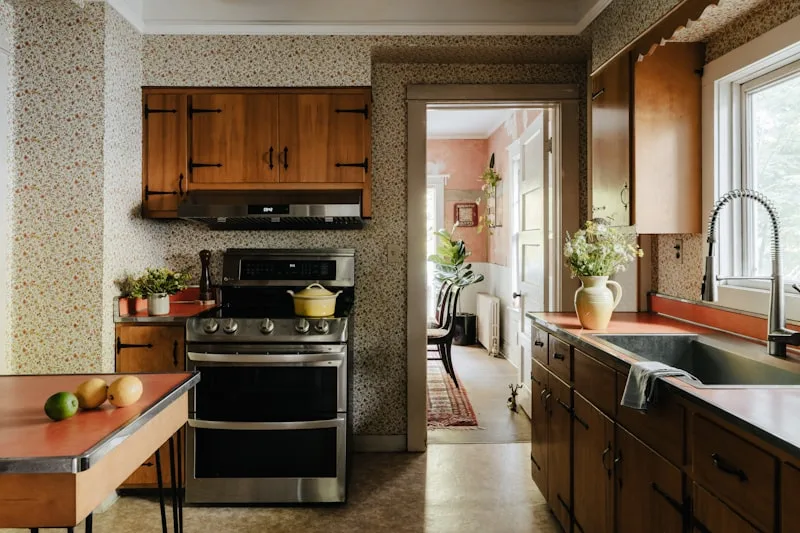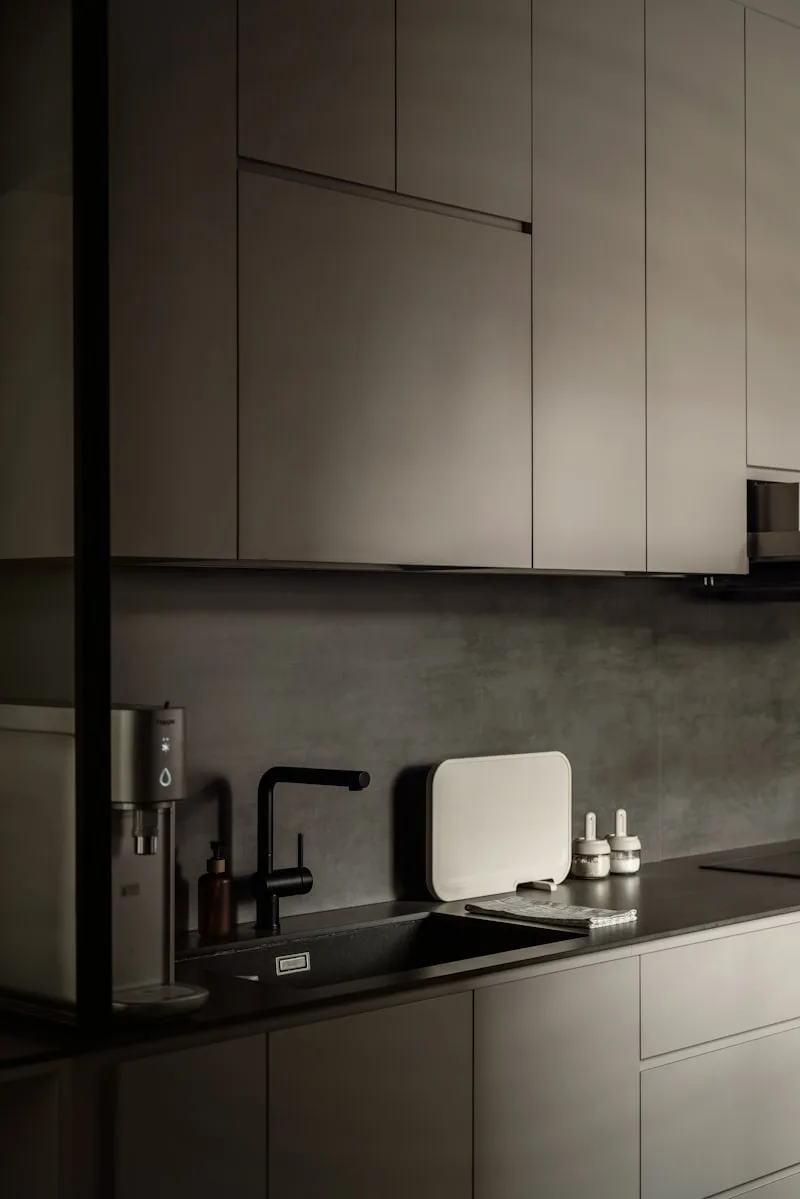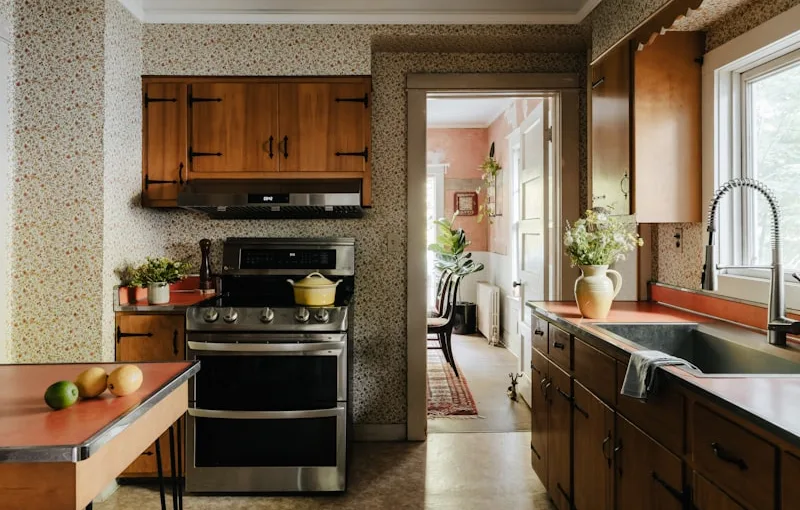Start by measuring your wall space. You want to ensure that your cabinets are level and aligned perfectly. Use a stud finder to locate the studs in your wall; this is where you’ll want to anchor your cabinets for maximum stability. Think of it like finding the backbone of your kitchen—without it, everything could come crashing down!
Once you’ve marked your studs, it’s time to install the mounting rail. This little piece of hardware is your best friend. It acts like a shelf for your cabinets to rest on, making the whole process smoother. Attach the rail to the wall, ensuring it’s level. If it’s not, your cabinets will end up looking like they’re on a tilt-a-whirl ride!
Now comes the fun part—lifting those cabinets into place. With your friend’s help, carefully position the first cabinet onto the mounting rail. Use your level to check that it’s straight. If it’s not, a little adjustment here and there will do the trick. Secure it with screws, and voilà! You’re on your way to a stunning kitchen makeover.
Repeat this process for the rest of your cabinets, and soon enough, you’ll have a beautiful, functional kitchen that you can proudly show off to friends and family. Just remember, patience is key, and don’t hesitate to take a break if you need it!
Mastering the Art of IKEA: A Step-by-Step Guide to Hanging Your Kitchen Cabinets
First things first, gather your tools. You’ll need a level, a drill, a stud finder, and, of course, your trusty IKEA assembly instructions. Think of these tools as your kitchen warriors, ready to help you conquer the chaos. Start by measuring your wall space. This is like laying the groundwork for a masterpiece; you wouldn’t paint a wall without knowing its dimensions, right?
Next, locate the studs in your wall. This step is crucial because you want your cabinets to be securely anchored. Use your stud finder like a treasure map, marking where the studs are. Once you’ve got your spots, it’s time to mark where your cabinets will hang. A level is your best friend here—nothing screams “DIY disaster” like crooked cabinets!
Now, let’s talk about the actual hanging. It’s like a dance; you need to lift, align, and secure. Start with the upper cabinets, as they’re lighter and easier to maneuver. With a partner (or a friend), lift the cabinet into place, ensuring it’s level. Drill into the studs, and voilà! You’re one step closer to your dream kitchen.
From Flat-Pack to Fabulous: Tips for Perfectly Hanging IKEA Kitchen Cabinets
First off, you’ll want to gather your tools. A level, a drill, and a stud finder are your best friends here. Think of them as your trusty sidekicks on this DIY adventure. Start by measuring your wall space. You wouldn’t want to hang your cabinets too high or too low, right? Picture this: you’re reaching for a spice jar, and it’s just out of reach. Frustrating, isn’t it?
Next, mark where the top of your cabinets will sit. Use a pencil to draw a straight line across the wall. This line is your guiding star, ensuring everything stays level. Now, here’s a pro tip: always secure your cabinets to the wall studs. It’s like anchoring a ship in a storm—your cabinets will be safe and sound.
When it’s time to hang the cabinets, enlist a friend. Trust me, two sets of hands are better than one! As you lift the cabinet, make sure it aligns with your marked line. Use that level to check for any tilting. If it’s off, adjust it before securing it in place.
Elevate Your Space: Expert Techniques for Installing IKEA Kitchen Cabinets
First things first, let’s talk about planning. Before you even think about picking up a screwdriver, take a moment to measure your space. It’s like trying to fit a square peg in a round hole—if you don’t get the measurements right, you’ll be in for a world of frustration. Grab a notepad and jot down the dimensions of your walls, windows, and any appliances. This will help you visualize how your new cabinets will fit into the space.
Next, consider the assembly. IKEA cabinets come flat-packed, which can be a bit overwhelming. But think of it like a puzzle; once you get the hang of it, it’s actually quite satisfying. Follow the instructions step-by-step, and don’t hesitate to lay everything out before diving in. It’s all about creating a solid foundation.
Now, let’s get to the fun part—installation! Start with the upper cabinets. It’s easier to work from the top down, and trust me, you’ll thank yourself later when you’re not trying to balance on a ladder while reaching for that last screw. Use a level to ensure everything is straight; a crooked cabinet can throw off the entire look of your kitchen.
DIY Delight: How to Hang IKEA Kitchen Cabinets Like a Pro
First things first, gather your tools. You’ll need a level, a drill, a stud finder, and, of course, your IKEA cabinets. Think of these tools as your trusty sidekicks on this DIY adventure. Start by finding the studs in your wall—this is where the magic happens. Just like a solid foundation for a house, your cabinets need a sturdy base to hang on. Use the stud finder to mark those spots; it’s like playing a treasure hunt, but the prize is a fabulous kitchen!
Next, measure and mark where your cabinets will go. Picture this: you’re an artist, and your kitchen wall is the canvas. Use a level to ensure everything is straight—nobody wants a crooked cabinet that looks like it’s about to slide off the wall! Once you’ve got your marks, it’s time to drill. This is where you channel your inner handyman. Secure the mounting brackets to the wall, and then hang your cabinets like a pro. It’s like placing the final piece in a puzzle; everything just clicks into place.
As you step back to admire your handiwork, you’ll feel a rush of pride. You didn’t just hang cabinets; you created a space that reflects your style and personality. So, roll up your sleeves, put on some music, and let’s get to work! Your dream kitchen is just a few steps away.
The Ultimate IKEA Kitchen Cabinet Installation Guide: Hang It Right the First Time!

First things first, gather your tools. You’ll need a level, a drill, a stud finder, and, of course, a trusty tape measure. Think of these tools as your kitchen installation superheroes, ready to save the day. Now, before you even think about drilling into your walls, take a moment to plan your layout. Visualize where each cabinet will go, and don’t forget to consider the height. You want to avoid that awkward moment when you realize your upper cabinets are too high to reach—unless you’re aiming for a kitchen that doubles as a climbing wall!
Once you’ve mapped it all out, it’s time to find those studs. Trust me, this step is crucial. Hanging cabinets on drywall alone is like trying to hang a heavy painting with a piece of tape—it’s just not going to end well. Use your stud finder to locate those sturdy beams behind the wall. Mark them with a pencil; they’re your best friends in this installation journey.

Now, let’s talk about leveling. Picture this: you’ve hung your cabinets, and they’re all crooked. It’s like wearing mismatched shoes—just not right! Use your level to ensure everything is perfectly aligned. If one cabinet is off, it can throw the whole look of your kitchen out of whack.
Frequently Asked Questions
What tools do I need to hang IKEA kitchen cabinets?
To hang IKEA kitchen cabinets, you will need a level, a drill, screws, a stud finder, a measuring tape, and a pencil for marking. Additionally, having a helper can make the process easier. Ensure you have the appropriate wall anchors if you’re not securing into studs.
Can I hang IKEA cabinets without a helper?
Hanging IKEA cabinets alone is possible with proper preparation and tools. Use a level, a stud finder, and a secure mounting system. Start by marking the wall for accurate placement, then lift the cabinet onto the brackets. Ensure it is stable before securing it fully. Take your time and follow instructions carefully for the best results.
How do I level IKEA kitchen cabinets during installation?
To level IKEA kitchen cabinets during installation, start by using a level tool to check each cabinet’s alignment. Adjust the cabinet legs by turning them clockwise or counterclockwise to raise or lower the cabinet as needed. Ensure that all cabinets are aligned with each other and the wall. Use shims if necessary to fill any gaps and achieve a stable, level surface. Double-check the level after adjustments before securing the cabinets in place.
What is the best way to secure IKEA cabinets to the wall?
To securely fasten IKEA cabinets to the wall, use the provided wall anchoring hardware. Start by locating the wall studs using a stud finder, then mark the positions. Attach the brackets to the back of the cabinets and align them with the studs. Use screws to firmly secure the cabinets to the wall, ensuring they are level. For added stability, consider using additional brackets or straps if necessary.
How do I measure for hanging IKEA kitchen cabinets?
To measure for hanging kitchen cabinets, start by determining the desired height from the floor to the bottom of the cabinets, typically 54 inches for standard installations. Use a level to mark a straight line on the wall at this height. Measure the width of the space where the cabinets will be installed, accounting for any appliances or obstacles. Finally, check for any irregularities in the wall surface and adjust your measurements accordingly to ensure a proper fit.
